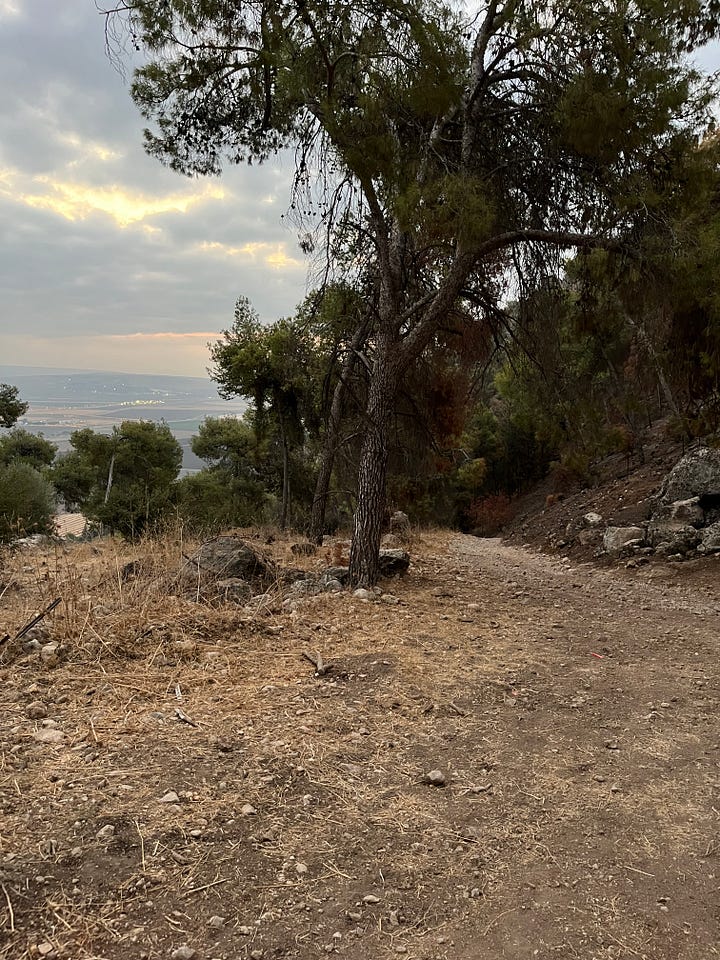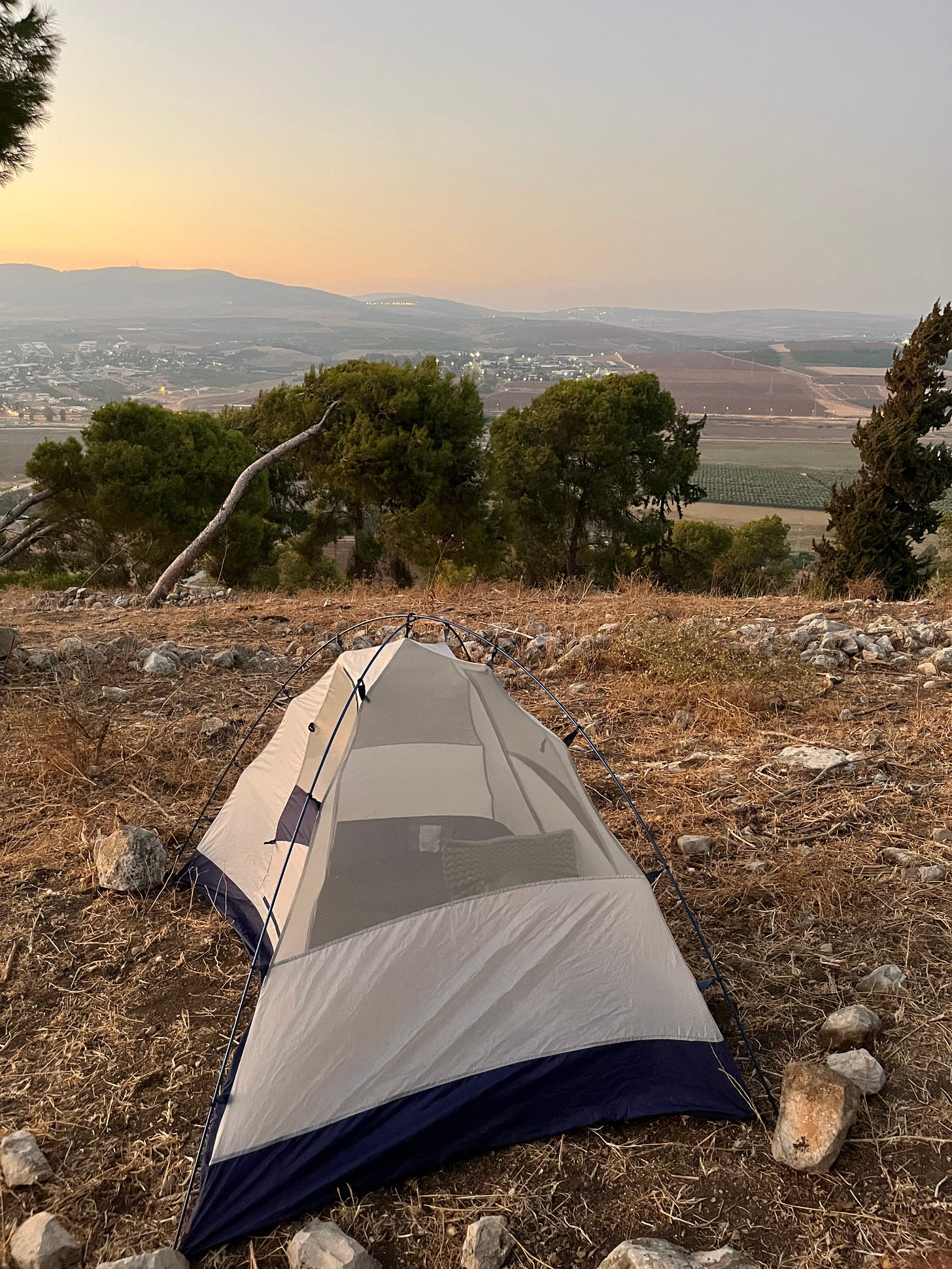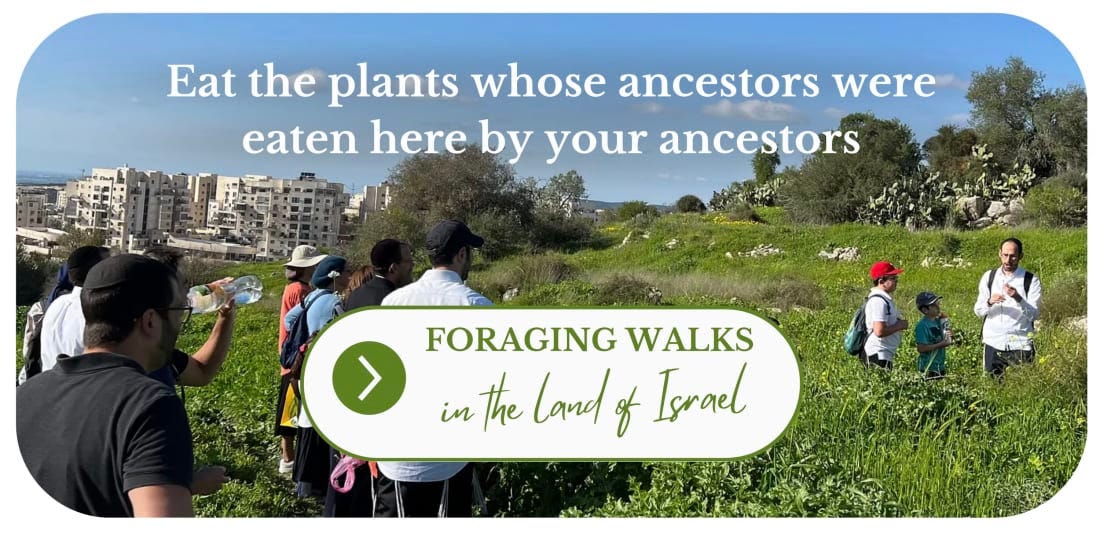Nights on the Gilboa
Facing Natural Israel's dark and quiet - until dozens of kids come knocking.
Dear Healthy Jew,
Recently I’ve been learning to value nights when I’m out hiking: not to walk alone on pitch-black trails - that could be dangerous - but for meeting Natural Israel in its darkness and quiet.
Perhaps I’m also looking to meet my own dark and quiet: to face my fears of the world and its creatures.
So on a recent hike on the Gilboa Mountain - a long, narrow ridge located right where the biblical Shomron folds into the Galil - I took the mid-afternoon bus out of Jerusalem and reached the mountain’s base just as night was beginning to fall.
Heading into the little town of Cheftziba, I met a couple driving around a golf cart with their little girl and a dog. I asked them where’s a good place to camp above their century old kibbutz. They said it’s better to sleep in a certain park just inside the village, but if I insist, there are nice lookouts on the trail heading up. It’s getting dark, they continued, so hop in next to the dog and we’ll show you the way.
Half an hour later, after scrambling up a steep incline as the last rays of light fell away, and skirting around a house-of-sorts that some enterprising soul built around a rusting trailer, I pitched my tent on an charming little lookout, Mitzpe Gavrush, named after one of the Cheftziba’s founders.


Gavrush Lookout
The Gilboa’s days are from the hottest in the country - when I visited in late summer the highs approached 100F - but its nights are surprisingly chilly, mostly from the strong winds blowing across the mountain. I wasn’t uncomfortable, but cold enough to be happy I brought my sleeping bag.
After settling in, I ate supper, prayed, studied, and watched the stars. Some were moving fast, maybe meteors. But maybe just planes. But they were so many that maybe they were satellites. Honestly, I have no idea.
Finally, I curled up in my tent with a book. The plan was to get to sleep early, wake up early, and head up the mountain before the hottest heat hit.
But the little village of Cheftziba had other plans.
First I heard voices approaching - from the direction of the mountain. Then I saw flashlights. Lots of them.
Poking my head out of the tent, I found the leader of the local school’s night hike staring at me. His group of 70 elementary school kids would be sitting here for around an hour, he explained. They’ll be making lots of noise.
Then he said:
Maybe you want to come out and tell them about the stars in the sky and the lights we’re seeing on the ground?
To which I replied:
Um, well, ok, sure, why not?
The kids were lots of fun, but somewhat less than eager to learn about stars and lights. Their main takeaway from my talk was that my name is Shmuel Chaim and I’m from Bet Shemesh and originally from America.
I even managed to get across where Bet Shemesh is: if you climb up the Gilboa, then down the other side, walk straight through Jenin and then a few more days, you’ll get to Jerusalem, which isn’t far from Bet Shemesh.
I asked them where the Galil is. They pointed to Jordan. I pointed the other way. I’m not sure they got it.
I also told them about Shaul’s (Saul) final, tragic battle with the Philistines on the very mountain we were sitting on. And Rabbi Yehuda HaNasi’s life in Tzippori - which is those lights, right on the other side of the valley! - and his clandestine meetings with the Roman emperor Antoninus in the next valley.
Usually children love stories like these. But these sons and daughters of the Gilboa were oddly detached from their home’s heritage. Nothing hostile. They just didn’t care. Instead of asking if I crawled through the tunnel from Antoninus’s Roma to Rabbi Yehuda’s Tzippori, they just chanted my name even louder.
I quit while I was ahead, and didn’t tell them about the 6th century Bet Alfa synagogue’s remarkable mosaics depicting ancient Jewish life that were excavated right in the middle of their town.
Afterwards, their leader explained to me how the kibbutzim of the Charod Valley were founded by staunch socialists - even some communists - who were determined to settle the Land of Israel without the God of Israel. After five generations, their offspring no longer harbor enmity toward their religion. It’s just not relevant. Israel’s history touches them similarly to how I feel about the sagas of medieval England’s kings and queens.
Draining the Swamp
And yet I’m grateful to the Jews who settled the area around a century ago.
Before they arrived, the Charod Valley was an impassible, dangerous swamp. The only way to cross from Afula to Bet Shean was the railway the British hacked through the mud. Driven to make the valley home, these early Zionists drained the swamp, opening some of modern Israel’s most fertile farmlands. Their efforts made it possible to build the highways that brought me here today.
Israel - the land and the people - are complicated creatures. At Healthy Jew, we’re not here to change anyone, nor to defend any status quo. Politics are beyond our purview, as I explained in my article about the Golan Heights. We’re here to “walk and travel” (Bereishis/Genesis 12:9) in the footsteps of our forefather Avraham (Abraham), to appreciate Natural Israel exactly as we find it, with all it’s entanglements.
Yonasan Hill

The second night was quieter than the first. I camped out on Yonasan Hill, which is apparently named after the son of Shaul (Saul) who died in battle on the Gilboa together with his father.
There’s a lovely stone monument here honoring other Jewish soldiers who died on this corner of the Gilboa, in Israel’s 1948 War of Independence. But today the adjacent lot is filled with hay and cow dung. A few cows were hanging around. Apparently the local farmers use it as a feeding area. Behind the monument is a large ruin of an ancient village. Perhaps Shaul - or the Philistines - left to their battle from here.
Because of the cow dung situation, I camped in the woods a bit below the lookout.
Early the next morning I marched down the Gilboa by the light of dawn’s first rays.


After filling up on water in Gidona, another little village at the Gilboa’s foot, I hung out by a nearby spring until it was time to head home.
I know, I haven’t shared yet about my day hiking on top of the Gilboa. I’ll get there next week. Stay tuned.
Update from October 2023: Four days after this article was published, Hamas terrorists murdered 1500 Israelis, mostly civilians, in southern Israel. Healthy Jew immediately joined the war effort by publishing on healthy Jewish living during challenging times, and launched a new Sunday newsletter about Natural Israel. As part of that project, I posted a few weeks later about my days on the Gilboa:
Thank you for reading Healthy Jew.
Here are 2 great paths to continue the journey:
Also check out this intro and index to explore hundreds of posts about our 3 Healthy Jew topics: Wellness with Wisdom, Land of Life (Israel), and Sensible Spirituality.
Finally, always feel free to reach out here with any comments, questions, or complaints:
I look forward to hearing from you!
Be well,
Rabbi Shmuel Chaim Naiman












Concerning your experience with the large group of kids from the kibbutz; thanks for modeling accepting people where they are at!